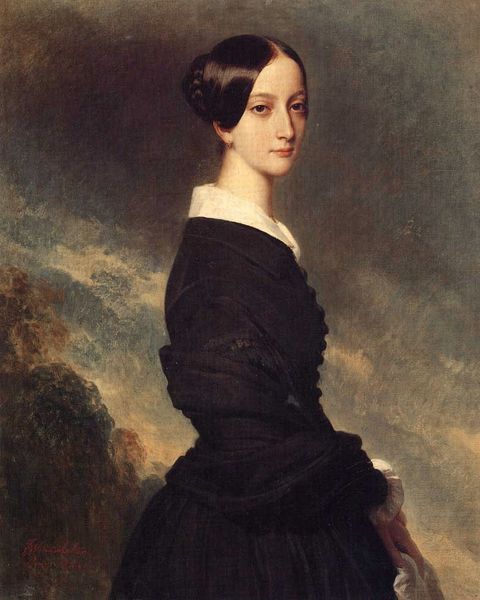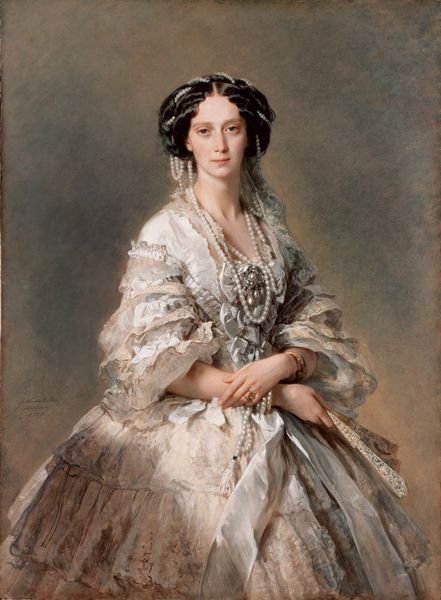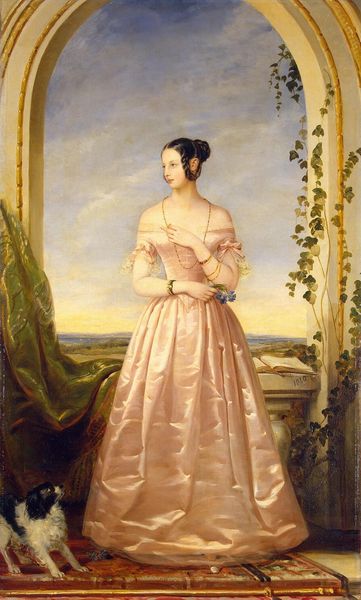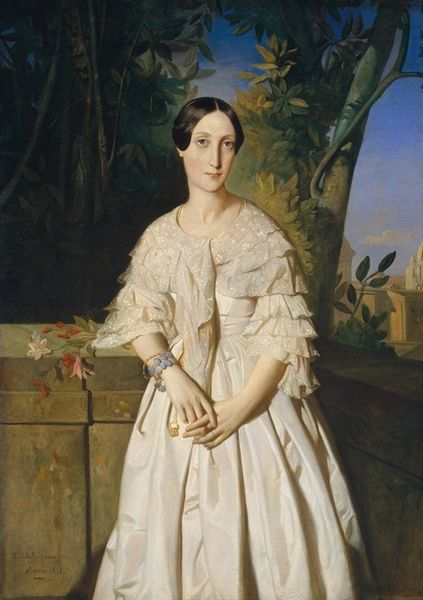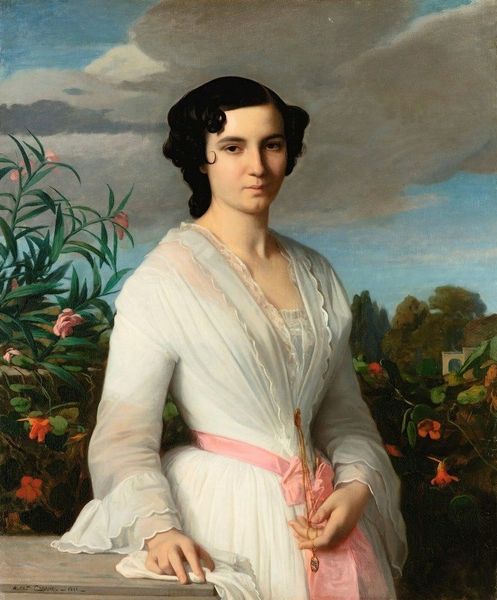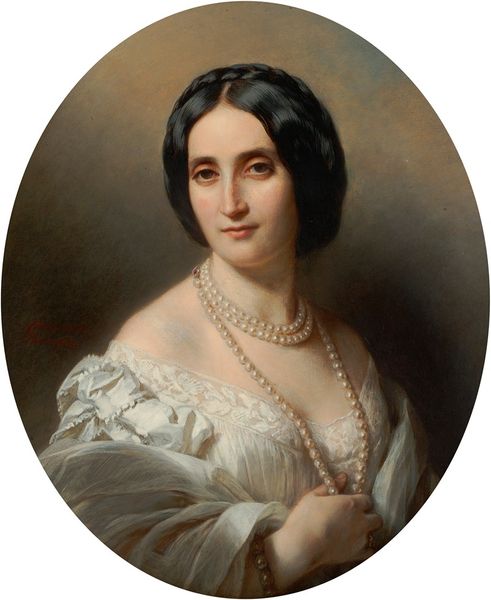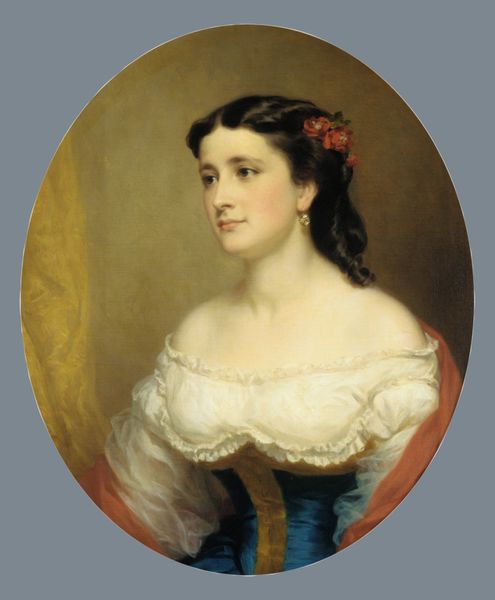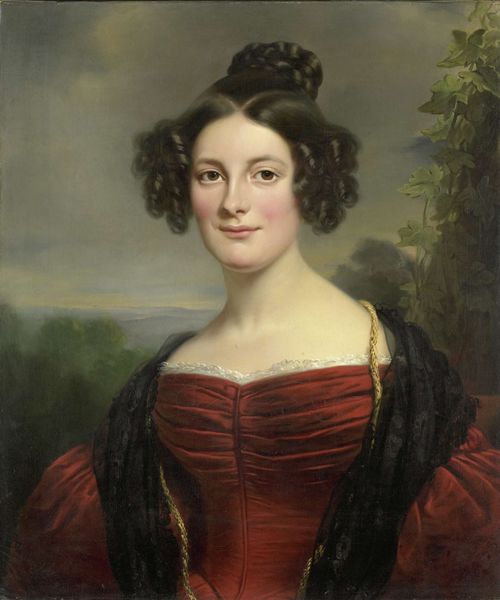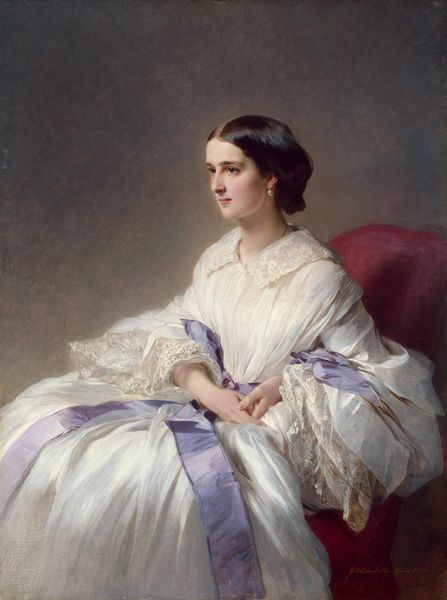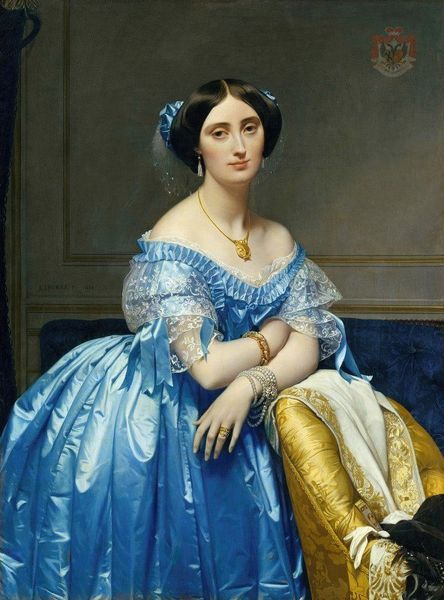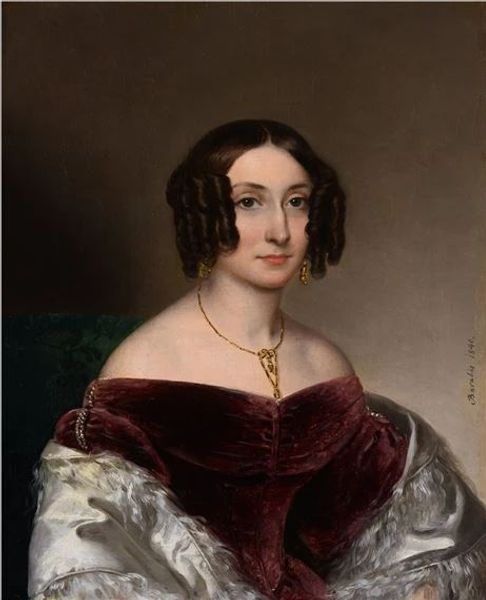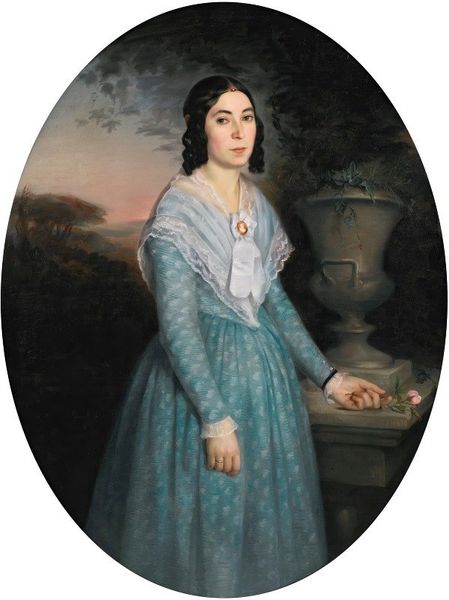
painting, oil-paint
#
portrait
#
figurative
#
painting
#
oil-paint
#
figuration
#
romanticism
#
history-painting
#
academic-art
Copyright: Public Domain: Artvee
Curator: Upon our left, we encounter Franz Xaver Winterhalter's "Portrait of Augusta Wichrow," executed in 1848 with oil paints. Editor: My first impression is one of cool elegance. The soft blues and greens create a tranquil atmosphere, despite the formality of the portrait. There's a certain self-possessed air about the subject. Curator: Winterhalter was celebrated for his ability to capture the likeness and status of his aristocratic sitters, and that is definitely on display here. Note how the setting and composition reinforce her position within society, characteristic of history painting trends and Academic art. Editor: The cascade of fabric certainly makes a statement. The dress drapes like a carefully arranged waterfall. What I find fascinating is the suggestion of classical drapery, perhaps harking back to depictions of Roman goddesses and a desire to associate the sitter with those symbols. The composition focuses entirely on the individual and their internal and external state, in keeping with Romantic ideals. Curator: And considering the period, there’s the backdrop hinting at a meticulously cultivated estate. Winterhalter served at several European courts; that access, I believe, shapes the reading and reception of the painting even now. The background, for instance, reminds me a little of the political structures of court and aristocracy. It’s distant and a bit faded compared to the strong presentation of the sitter in the immediate foreground, even though her face also conveys something of the same distant feeling. Editor: Her accessories too speak volumes; the understated jewelry, the delicate scarf. They enhance the overall impression of refined taste and hint at the social language encoded within portraiture. She embodies a certain kind of fashionable status and power. I can only imagine the psychological depth encoded in each visual symbol, designed for contemporaries who were keenly aware of their semiotic weight. Curator: In that respect, portraits like these offered powerful affirmations of class and societal stability amidst times of socio-political change. Editor: Absolutely. And beyond the immediate context, these visual representations can reveal broader cultural aspirations. Even today, that is an immediate quality. Curator: Indeed. Hopefully our viewers found the context surrounding this work to be as informative as it is complex. Editor: I certainly hope this discussion shed new light on some of the many layers within Winterhalter's fascinating portrait.
Comments
No comments
Be the first to comment and join the conversation on the ultimate creative platform.


